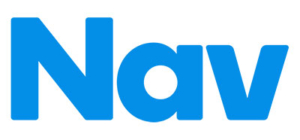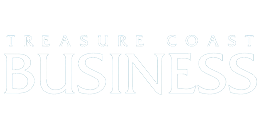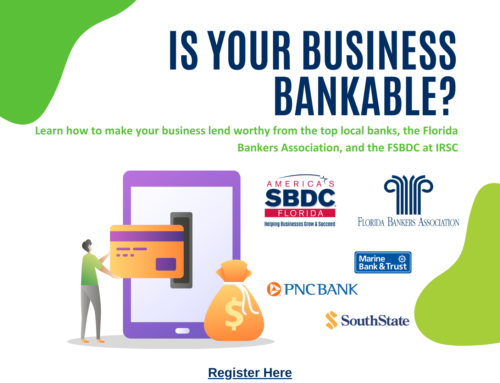New form to apply for PPP loan forgiveness made simpler
BY GERRI DETWEILER
 The SBA has released the new PPP Loan Forgiveness Application Form 3508EZ, which is designed to streamline PPP forgiveness for certain businesses who qualify.
The SBA has released the new PPP Loan Forgiveness Application Form 3508EZ, which is designed to streamline PPP forgiveness for certain businesses who qualify.
While applying for forgiveness may still seem daunting — even with this simpler form — the EZ form requires fewer calculations and less documentation for eligible borrowers.
Here we’ll walk through it together and answer some frequently asked questions.

Gerri Detweiler is a leading, nationally recognized financing and credit expert, with more than 20 years of experience. During the 2008/2009 financial crisis, Detweiler was interviewed hundreds of times, providing insightful expertise and actionable advice for traversing the turbulent landscape and unknown change. Today, she is education director for Nav, the trusted financing partner of over 1.2 million businesses, where she gives Nav’s customers certainty in an uncertain world through expertise and actionable advice.
Who Can Use This Form?
The PPP forgiveness EZ form is designed for businesses that meet at least one of the following criteria:
• Are self-employed and have no employees; or
• Did not reduce the salaries or wages of their employees by more than 25%, and did not reduce the number or hours of their employees; or
• Experienced reductions in business activity as a result of health directives related to COVID-19, and did not reduce the salaries or wages of their employees by more than 25%.
The instructions for Form 3508EZ elaborate on these points. You must qualify under one of the following three categories. If you do, then you may use this simplified form to apply for forgiveness with your lender. If you do not, then you must use the standard forgiveness form.
Again you must meet at least one of the following criteria in order to use Form 3508EZ:
The Borrower is a self-employed individual, independent contractor, or sole proprietor who had no employees at the time of the PPP loan application and did not include any employee salaries in the computation of average monthly payroll in the Borrower Application Form (SBA Form 2483).; or
The Borrower did not reduce annual salary or hourly wages of any employee by more than 25 percent during the Covered Period or the Alternative Payroll Covered Period (as defined below) compared to the period between Jan. 1, 2020 and March 31, 2020 (for purposes of this statement, “employees” means only those employees that did not receive, during any single period during 2019, wages or salary at an annualized rate of pay in an amount more than $100,000); and
The Borrower did not reduce the number of employees or the average paid hours of employees between Jan. 1, 2020 and the end of the Covered Period. (Ignore reductions that arose from an inability to rehire individuals who were employees on Feb. 15, 2020 if the Borrower was unable to hire similarly qualified employees for unfilled positions on or before Dec. 31, 2020. Also ignore reductions in an employee’s hours that the Borrower offered to restore and the employee refused.); or
The Borrower did not reduce annual salary or hourly wages of any employee by more than 25 percent during the Covered Period or the Alternative Payroll Covered Period (as defined below) compared to the period between Jan. 1, 2020 and March 31, 2020 (for purposes of this statement, “employees” means only those employees that did not receive, during any single period during 2019, wages or salary at an annualized rate of pay in an amount more than $100,000); and
The Borrower was unable to operate during the Covered Period at the same level of business activity as before Feb. 15, 2020, due to compliance with requirements established or guidance issued between March 1, 2020 and Dec. 31, 2020 by the Secretary of Health and Human Services, the Director of the Centers for Disease Control and Prevention, or the Occupational Safety and Health Administration, related to the maintenance of standards of sanitation, social distancing, or any other work or customer safety requirement related to COVID-19.
What is the Covered Period?
The PPP Flexibility Act changed the Covered Period for purposes of the calculations above. (Note there is more than one “Covered Period” in the CARES Act. Here we are talking about the one that refers to when you spend the funds to qualify for forgiveness.)
The Covered Period is either:
(1) the 24-week (168-day) period beginning on the PPP Loan Disbursement Date, or
(2) If the Borrower received its PPP loan before June 5, 2020, the Borrower may elect to use an eight-week (56-day) Covered Period.
For example, if the Borrower is using a 24-week Covered Period and received its PPP loan proceeds on Monday, April 20, the first day of the Covered Period is April 20 and the last day of the Covered Period is Sunday, Oct. 4. In no event may the Covered Period extend beyond Dec. 31, 2020.
What is the Alternative Payroll Covered Period?
Not all businesses’ payroll periods match up perfectly with the date when they receive their PPP funds so there is an Alternative Payroll Covered Period under which the business can spend PPP funds and still qualify for full forgiveness. This is called the Alternative Covered Payroll Period and the instructions describe it this way:
For administrative convenience, borrowers with a biweekly (or more frequent) payroll schedule may elect to calculate eligible payroll costs using the 24-week (168-day) period or for loans received before June 5, 2020 at the election of the borrower, the eight-week (56-day) period that begins on the first day of their first pay period following their PPP Loan Disbursement Date.
For example, if the Borrower is using a 24-week Alternative Payroll Covered Period and received its PPP loan proceeds on Monday, April 20, and the first day of its first pay period following its PPP loan disbursement is Sunday, April 26, the first day of the Alternative Payroll Covered Period is April 26 and the last day of the Alternative Payroll Covered Period is Saturday, Oct. 10.
Borrowers that elect to use the Alternative Payroll Covered Period must apply the Alternative Payroll Covered Period wherever there is a reference in this application to “the Covered Period or the Alternative Payroll Covered Period.”
However, Borrowers must apply the Covered Period (not the Alternative Payroll Covered Period) wherever there is a reference in this application to “the Covered Period” only. In no event may the Alternative Payroll Covered Period extend beyond Dec. 31, 2020.
Filling out the PPP Forgiveness Application Form 3508EZ
If you plan to use this form to qualify for forgiveness, we recommend you print out the PPP Forgiveness Application Form 3508EZ and follow along here. Your lender may use an electronic version of this form but if you have it handy, it won’t hurt to have this information already filled out.
First fill out basic information about your business. Unless your business address has changed, this should be the same as the information you used when you applied for PPP: Business Legal Name (“Borrower”), DBA or Tradename, if applicable, Business Address, Business TIN (EIN, SSN), Business Phone Number, Primary Contact, E-mail Address.
SBA PPP Loan Number: This is the number assigned by the SBA to your loan. If you don’t have it, ask your lender.
Lender PPP Loan Number: Enter the loan number assigned to the PPP loan by the Lender. Again, if you don’t know, ask your lender.
PPP Loan Amount: This is the amount you received.
PPP Loan Disbursement Date: Again, this is when the funds were deposited in your bank account. If you received more than one disbursement, use the date of the first one.
Employees at Time of Loan Application: Enter the total number of employees at the time of the Borrower’s PPP Loan Application. It’s unclear whether self employed individuals with no employees should list themselves here. Check with your lender.
Employees at Time of Forgiveness Application: Enter the total number of employees at the time the borrower is applying for loan forgiveness. Same question as the previous question.
EIDL Advance Amount: If you have received an EIDL advance (grant), enter it here. Note that the advance does not have to be repaid. It is different from an EIDL loan which must be repaid. (The deposit into your bank account would have included the notation EIDG for EIDL grant.)
EIDL Application Number: If you applied for an EIDL, enter your application number. If you can’t find your application number, try contacting the SBA Disaster Assistance hotline. If they can’t help, ask your lender for advice on what to do.
Payroll Schedule: The frequency with which payroll is paid to employees is: • Weekly • Biweekly (every other week) • Twice a month • Monthly • Other
Covered Period: See the instructions in the section above, What is the Covered Period?
Alternative Payroll Covered Period, if applicable: See the instructions in the section above, What is the Alternative Payroll Covered Period?
If Borrower (together with affiliates, if applicable) received PPP loans in excess of $2 million, check here: Check the box if the Borrower, together with its affiliates (to the extent required under SBA’s interim final rule on affiliates (85 FR 20817 (April 15, 2020)) and not waived under 15 U.S.C. 636(a)(36)(D)(iv)), received PPP loans with an original principal amount in excess of $2 million. If you received more than $2 million (with affiliates) make sure you review this with your advisors.
Forgiveness Amount Calculations
Payroll and Nonpayroll Costs
Line 1: Payroll Costs
Here you need to enter your payroll costs for the Covered Period or the Alternative Payroll Covered Period. To calculate these costs, you’ll be adding cash compensation, employee benefits and owner compensation (as applicable) and as described as follows in the instructions:
Cash Compensation: The sum of gross salary, gross wages, gross tips, gross commissions, paid leave (vacation, family, medical or sick leave, not including leave covered by the Families First Coronavirus Response Act), and allowances for dismissal or separation paid or incurred during the Covered Period or the Alternative Payroll Covered Period.
For each individual employee, the total amount of cash compensation eligible for forgiveness may not exceed an annual salary of $100,000, as prorated for the Covered Period. For an 8-week Covered Period, that total is $15,385. For a 24-week Covered Period, that total is $46,154 for purposes of this 3508EZ.
You can only include compensation of employees who were employed by the Borrower at any point during the Covered Period or Alternative Payroll Covered Period and whose principal place of residence is in the United States.
Employee Benefits: The total amount paid by the Borrower for:
1. Employer contributions for employee health insurance, including employer contributions to a self-insured, employer-sponsored group health plan, but excluding any pre-tax or after-tax contributions by employees. Do not add employer health insurance contributions made on behalf of a self-employed individual, general partners, or owner-employees of an S-corporation, because such payments are already included in their compensation.
2. Employer contributions to employee retirement plans, excluding any pre-tax or after-tax contributions by employees. Do not add employer retirement contributions made on behalf of a self-employed individual or general partners, because such payments are already included in their compensation, and contributions on behalf of owner employees are capped at 2.5 months’ worth of the 2019 contribution amount.
3. Employer state and local taxes paid by the Borrower and assessed on employee compensation (e.g., state unemployment insurance tax), excluding any taxes withheld from employee earnings.
Owner Compensation: Enter any amounts paid to owners (owner-employees, a self-employed individual, or general partners). For a 24-week Covered Period, this amount is capped at $20,833 (the 2.5-month equivalent of $100,000 per year) for each individual or the 2.5-month equivalent of their applicable compensation in 2019, whichever is lower. For an 8- week Covered Period, this amount is capped at 8/52 of 2019 compensation (up to $15,385).
Next, you’ll fill out information about nonpayroll costs. You only need to include these if you want to apply for forgiveness for these amounts. If you qualify for full forgiveness based on payroll costs and/or you don’t want to apply for forgiveness based on nonpayroll costs, you can put 0 in Lines 2-4.
Also note that for nonpayroll costs, an eligible nonpayroll cost must be paid during the Covered Period or incurred during the Covered Period and paid on or before the next regular billing date, even if the billing date is after the Covered Period. Eligible nonpayroll costs cannot exceed 40% of the total forgiveness amount. Count nonpayroll costs that were both paid and incurred only once.
Line 2. Business Mortgage Interest Payments: Enter the amount of business mortgage interest payments (not including any prepayment or payment of principal) paid or incurred during the Covered Period for any business mortgage obligation on real or personal property incurred before Feb. 15, 2020. Do not include prepayments.
Line 3. Business Rent or Lease Payments: Enter the amount of business rent or lease payments paid or incurred for real or personal property during the Covered Period, pursuant to lease agreements in force before Feb. 15, 2020.
Line 4. Business Utility Payments: Enter the amount of business utility payments (business payments for a service for the distribution of electricity, gas, water, telephone, transportation, or internet access) paid or incurred during the Covered Period, for business utilities for which service began before Feb. 15, 2020.
Potential Forgiveness Amounts
Now comes the fun part. You get to find out whether you qualify for full forgiveness. Hopefully you will!
Line 5. Add the amounts on lines 1, 2, 3, and 4
Line 6. PPP Loan Amount
Line 7. Payroll Cost 60% Requirement (divide Line 1 by 0.60): Divide the amount on line 1 by 0.60, and enter the amount. This determines whether at least 60% of the potential forgiveness amount was used for payroll costs.
Forgiveness Amount
Line 8. Forgiveness Amount (enter the smallest of Lines 5, 6, and 7): That’s the end of the calculation. But, there’s one more thing you’ll need to be aware of. It’s this note in the instructions: “If applicable, SBA will deduct EIDL Advance Amounts from the forgiveness amount remitted to the Lender.” It appears that the EIDL advance (grant) will be subtracted from the amount for forgiveness purposes.
Please note
The material contained in this article is for informational purposes only, is general in nature, and should not be relied upon or construed as a legal opinion or legal advice. Please keep in mind this information is changing rapidly and is based on our current understanding of the programs. It can and likely will change. Although we will be monitoring and updating this as new information becomes available, please do not rely solely on this for your financial decisions. We encourage you to consult with your lawyers, CPAs and Financial Advisors.
See the original article in the print publication
Treasure Coast Business is a news service and magazine published in print, via e-newsletter and online at tcbusiness.com by Indian River Magazine Inc. For more information or to report news email staff@tcbusiness.com

